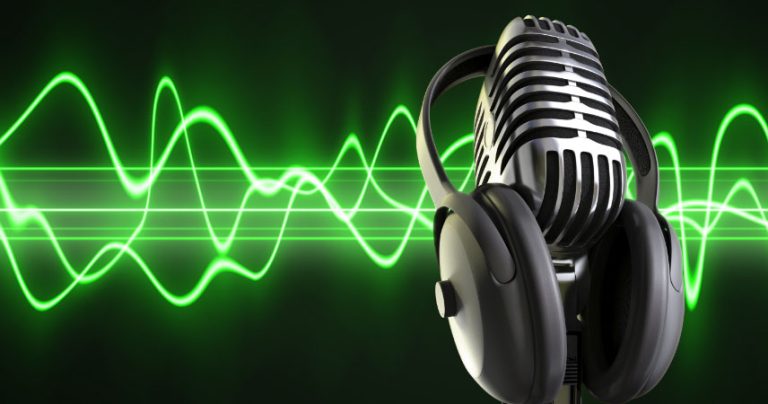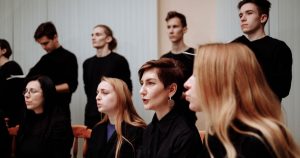Here’s a Vocal Acoustics 101 to introduce you to the basics and explain common terms like formants and resonances.
If you’ve ever tried to get your head around vocal acoustics and struggled, don’t worry – even the nerdiest of vocal nerds can find the subject challenging.
That’s why we enlisted Chadley Ballantyne, Assistant Professor of Music, Voice at Stetson University, to shed some light on this branch of vocal science.
Chadley was a recent guest on the Singing Teachers Talk podcast, so if this article whets your appetite to learn more about vocal acoustics tune in here to take a deeper dive.
In the podcast, Chadley explains that his light bulb moment with vocal acoustics came while messing about with software that analysed formants (we explain what formants are further down).
“I started to notice that if I just sang into my computer, and then just tried harder, that didn’t really accomplish anything,” Chadley says. “But if I did purposeful movements from vowel to vowel, then the formants moved a lot.
“I was like, ‘Oh, that’s not what I expected, but then I realised duh of course! That’s how articulation works’.”
Before we get stuck in, a quick disclaimer.
In the world of voice, there isn’t universal agreement on vocal acoustics terminology. The terms Chadley uses are common. But some papers on vocal acoustics – particularly ones that date back a bit – might use slightly different terminology. That’s just the nature of the beast.
So what are vocal acoustics?
Chadley take it away: “From the teacher side of things, what we’re talking about is how the sounds created by our vocal folds interact with our vocal tract. It’s how articulation moves resonance or changes the resonance response of our vocal tract. We can skillfully learn how to create favourable matchups between our articulation and resonance to get maximum efficiency, power, clarity, beauty and spontaneity out of our singing.”
What are formants and resonances?
“The vocal tract is a resonator, and it has multiples resonances, and those resonances create formants in the radiated sound.
“The formant is the thing that we hear. It’s the thing that we perceive, the thing that affects timbre. Resonance is the property of the vocal tract that causes the formant.”
“It can be helpful for singers to remember that it’s the vowels that define where the formants are. From the singer side, it’s the vowels that drive the formants.”
We’ve come across fo, f1 and f2 when reading about formants. Please explain.
“Those are standard abbreviation symbols. fo is fundamental oscillation. And what that refers to is the frequency at which the vocal folds are opening and closing. In previous literature, it may have been referred to as the first harmonic.
“When you see fo it means at that moment the vocal folds are opening and closing at a rate of 440 times per second. Or if you’re singing A above the staff, the soprano high A, that would be 880 times per second. That’s pretty interesting, useful information – the vocal folds open and close really darn fast!
“The f1 and f2 are what we typically call the vowel formants and they’re impacted quite a lot by the movement of the mouth.”
And a quick word on the tongue
With all this talk about articulation, Chadley says one crucial question to ask is: “How can I make the tongue work better and freer and more accurately to create these awesome narrowings in the vocal tract that create really powerful acoustic responses?
“A lot of the troubles that I see singers running into is that, instead of using the tongue within that open space, they’re crimping that open space to meet the tongue, either from their speech habits or well-meaning instructions they’ve received in their own training about relaxing the tongue. We don’t want a tense tongue – we want a tongue that’s active and precise.”
Listen to the full interview on Singing Teachers Talk here.
Check out this great BAST webinar by Ken Bozeman on The Acoustic Landscape Singers Inhabit.




